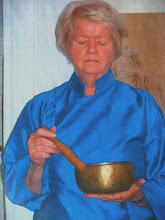May 22, 1999. I had read about La Marcha de Lapices while I was in Boston. The media reported that teachers throughout the State had gone on strike for higher wages. The teachers had taken over the center of the City. Traffic was at a stand still, and tourists were having second thoughts about visiting. I telephoned friends. “Come,” they said. “There is no need to cancel your plans. Every year they stage a peaceful strike.”
I called on the teachers during my first morning in the City. The area was quiet. This was not the kind of protest I was familiar with. The teachers were camped in the streets surrounding the Alameda Plaza and in the Alameda itself. A maze of strings linked and anchored blue, yellow, red and black plastic sheets to trees, stakes and the corners of adjacent buildings. The plastic provided shade during the day and a roof to sleep under at night. Being tall, I had to bend over in order to make my way around the shelters.
May 26, 1999. I kept to the side streets where the webs of strings were less dense and strung higher. Even so, it was not easy to walk upright. I proceeded with great care.I did not want to damage the temporary homes.
I saw only one toilet stall. Where were their bathrooms? A man laughed. “We use the toilets in the market,” he informed me, reading my mind.
A few women, their skirts tucked under them, sat on the ground under the plastic awnings and embroidered. Many shelters had braziers outside their entrance, some attached to a tank of gas. Fruits, vegetables and crates of white eggs were stacked to the side.
The community was divided into subgroups according to the town or region that the teachers represented. I marveled at their determined endurance. They didn’t indulge in rhetoric or inflammatory speeches. Their physical presence conveyed their protest.
May 27, 1999. I skirted the concentration of shelters near the cathedral. Women were knitting and embroidering. Everyone spoke in a low voice or sat withdrawn into themselves. Men, eyes shut tight, curled in the fetal position on the ground or sidewalk beneath the plastic. The morning was hot. It had to be stifling under the plastic coverings. I could feel the heat emanating from them.
As if in response to a silent command, the marchers rose, formed a column and began to parade quietly through the streets. I kept abreast of them from the sidewalk, then skittered through their ranks and went about my day. The sounds of softly shuffling feet and of the muted chanting of slogans gradually receded in the distance.
May 28, 1999. The number of protesters had dwindled. Those who remained had settled in. White deck chairs and wooden benches had appeared outside the shelters. The teachers exchanged news and strategy with colleagues or sat and talked with friends and relatives who had come to visit or to lend support to the teachers’ cause.
Bottles of water hung from the strings that anchored the plastic awnings. There was a faint smell of urine. A water truck labeled “para uso de humano” (for human use) drove off.
May 29, 1999. Today there were less people but more chairs and benches. The smell of urine was stronger. Many of the women were making crafts. They shared their skills. One group was demonstrating how to make large bows from yellow ribbon. The ribbon flowed through their fingers like sunlight. Teachers, even on strike, felt the need to instruct and to educate.
It was my last day in Oaxaca. I will miss my mornings with the teachers. I have developed a feeling of solidarity with them and their cause and with their understated protest. The power of silence and the power of presence never have seemed so potent a statement.
(1) The March of the Pencils.
Monday, January 7, 2008
Subscribe to:
Post Comments (Atom)

No comments:
Post a Comment